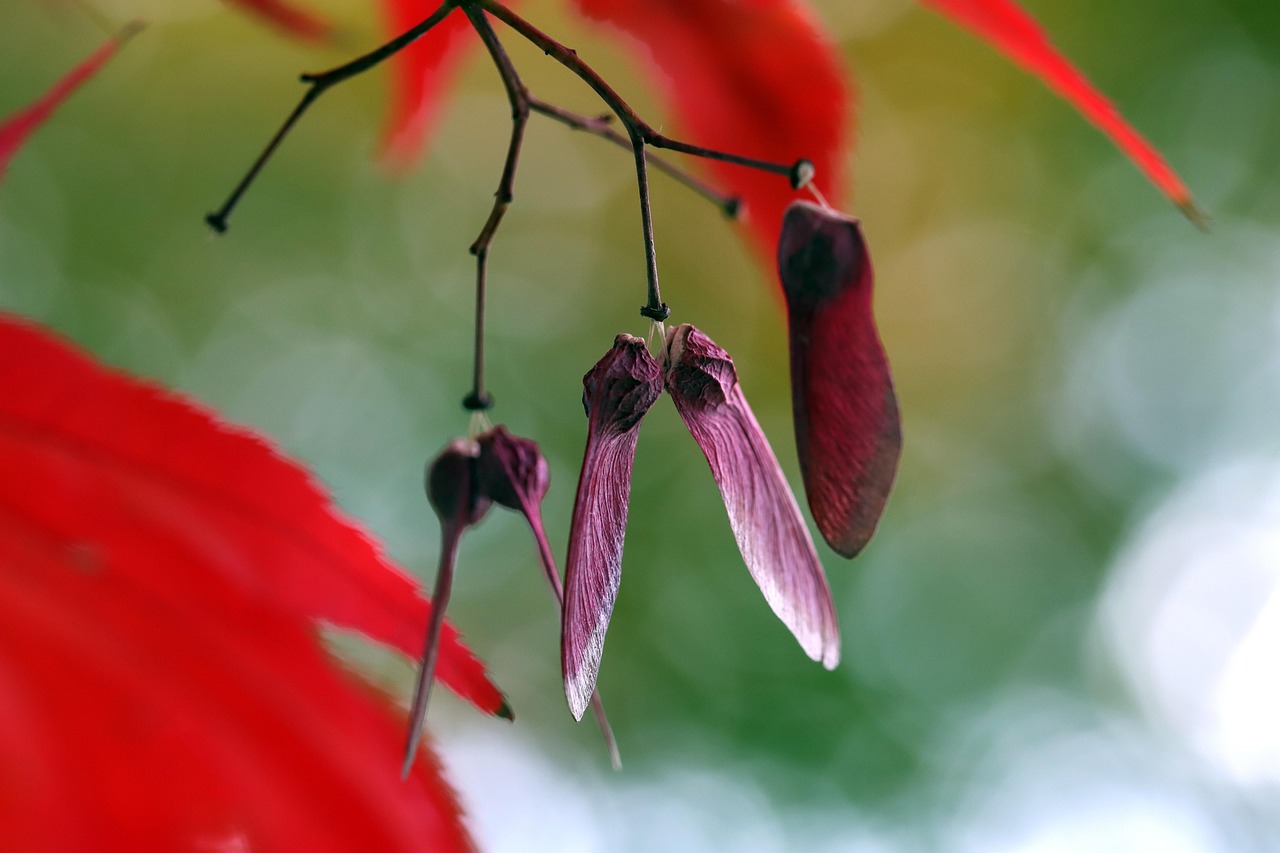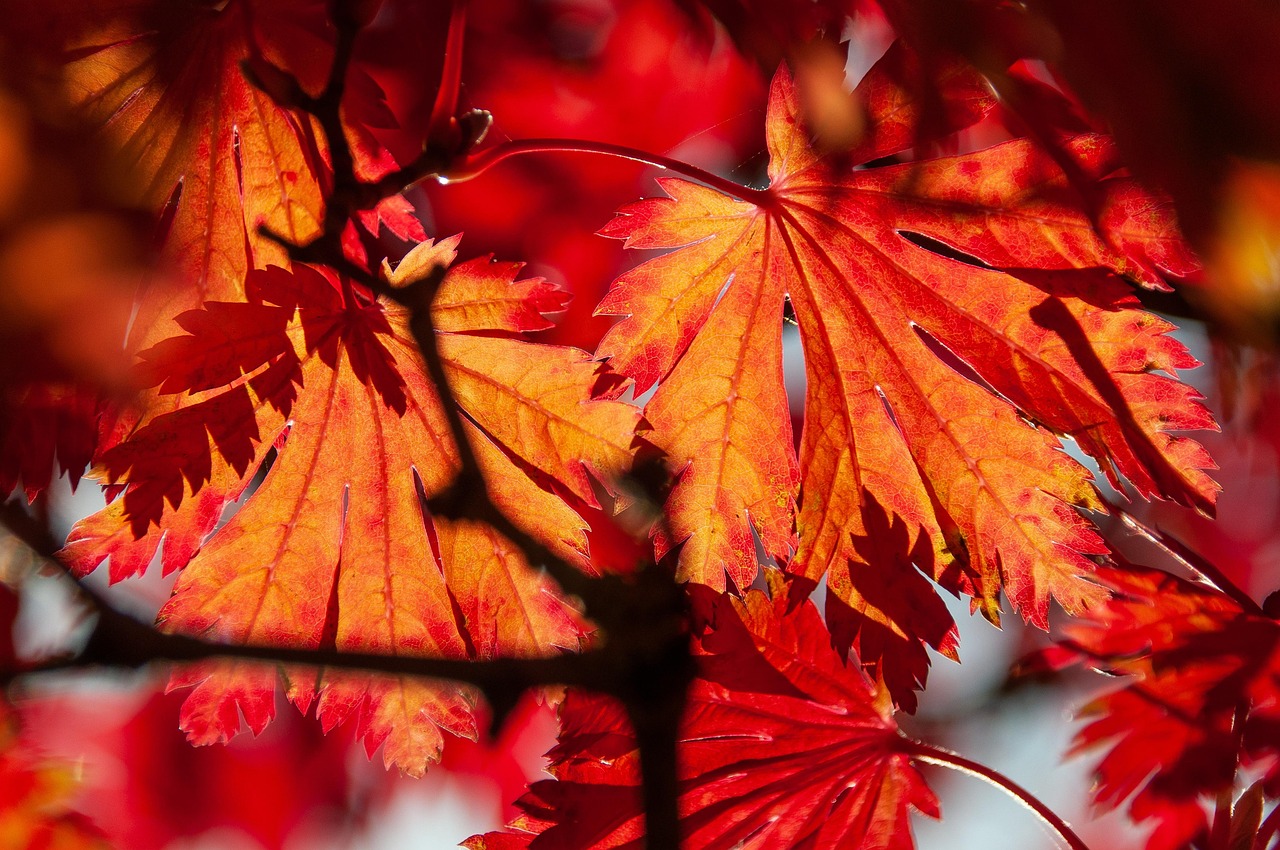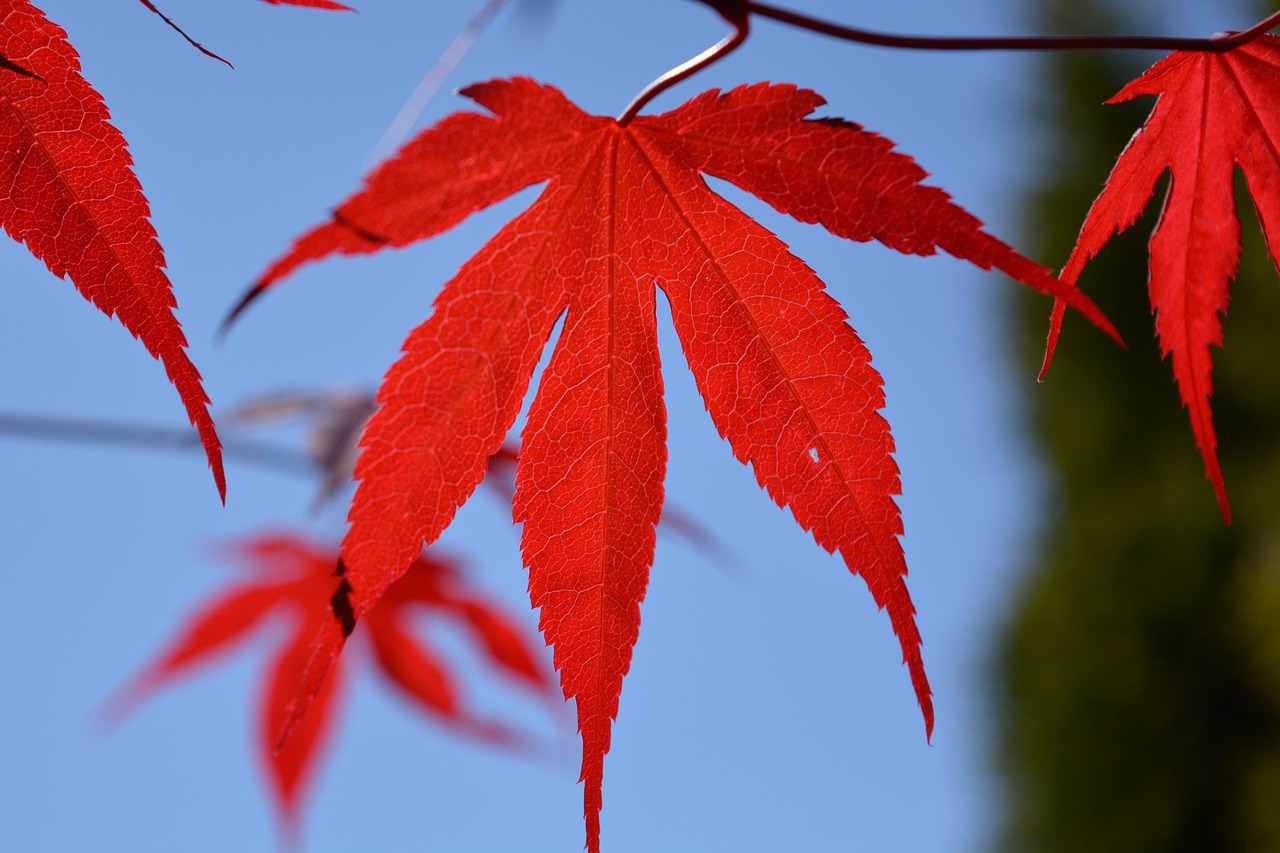A maple tree pruning diagram visually represents the best techniques for trimming and shaping maple trees. It helps tree owners understand how to maintain tree health, promote growth, and enhance aesthetics through proper pruning practices.
Pruning is a crucial aspect of maintaining maple trees. This practice not only encourages healthy growth but also helps in controlling the tree’s size and shape. Proper pruning can lead to a stronger, more resilient tree that can withstand pests and diseases. Moreover, well-pruned maple trees are aesthetically pleasing, enhancing the beauty of landscapes.

Understanding the right time and techniques for pruning is essential. During the late winter or early spring, before new growth starts, is typically the best time to prune maple trees. This timing minimizes sap loss and encourages robust growth in the upcoming season.
Importance of Pruning Maple Trees
Pruning serves several important functions for maple trees. The key benefits include:
- Health Improvement: Removing dead or diseased branches helps prevent the spread of diseases.
- Encouraging Growth: Pruning promotes new growth and can help shape the tree structure.
- Improving Aesthetics: Properly pruned trees look more attractive in gardens and landscapes.
- Increasing Safety: Removing low-hanging branches can prevent accidents, especially in public spaces.
Additionally, some specific techniques are essential for effective pruning. These techniques include thinning, topping, and heading back. Each method serves a different purpose and should be applied in suitable contexts. Understanding these techniques can further enhance your skills in tree care.

Common Maple Tree Pruning Techniques
There are several common pruning techniques used for maple trees. Each technique addresses different needs of the tree:
- Thinning: This involves removing selected branches to allow more light and air to penetrate the crown of the tree, promoting healthier growth.
- Topping: This method reduces the height of the tree but is generally discouraged as it can lead to weak growth patterns.
- Heading Back: Cutting back a branch to a bud or smaller branch encourages new growth while maintaining the tree’s overall shape.
When using these techniques, it is essential to use clean and sharp tools. This practice reduces the risk of introducing diseases to the tree. Always make cuts at a slight angle to promote healing and minimize water accumulation on the cut surface.
Understanding the Maple Tree Structure
A thorough understanding of a maple tree’s structure is vital for effective pruning. The main components include:

| Component | Description |
|---|---|
| Trunk | The main support structure that holds the tree upright and transports nutrients. |
| Main Branches | Large branches that extend from the trunk, supporting smaller branches and leaves. |
| Sub-Branches | Smaller branches that grow from the main branches, where leaves and flowers develop. |
| Leaves | The photosynthetic parts of the tree responsible for converting sunlight into energy. |
Recognizing these components helps determine which parts need trimming. Focusing on the right areas ensures that you are not only shaping the tree but also promoting its health.
Another critical aspect of understanding maple trees involves recognizing their growth patterns. Maple trees tend to have a dense canopy, which can impede sunlight from reaching lower branches. Pruning helps alleviate this issue by selectively removing branches that block light, allowing for balanced growth throughout the tree.
Factors Influencing Pruning Decisions
Several factors can influence how and when you prune your maple trees. These include:

- Tree Age: Younger trees may require different pruning methods compared to mature trees.
- Tree Health: The presence of diseases or pests will affect your approach to pruning.
- Season: Pruning during the correct season is crucial for optimal growth; late winter or early spring is usually best for maples.
- Desired Shape: The visual aesthetics you want to achieve will guide your pruning cuts.
By considering these factors, you can make informed decisions that benefit the overall health and appearance of your maple trees. Proper knowledge and techniques can lead to thriving trees that enhance your landscape’s beauty.
Tools and Equipment for Pruning Maple Trees
Using the right tools is essential for effective pruning. The quality and type of equipment you use can significantly affect the outcome of your pruning efforts. Proper tools ensure clean cuts, which promote faster healing and reduce the risk of disease.
- Hand Pruners: These are ideal for small branches, usually less than one inch in diameter. They allow for precise cuts.
- Loppers: For larger branches, loppers provide extra leverage and can handle branches up to two inches thick.
- Saws: A pruning saw is necessary for larger limbs. Ensure it is sharp for clean cuts.
- Safety Gear: Always wear gloves and safety goggles to protect yourself during the pruning process.
Before starting the pruning process, it is crucial to inspect your tools. Ensure they are clean and sharpened, as dull tools can cause jagged cuts that may harm the tree. Disinfecting tools before and after use can also help prevent the spread of diseases.
Step-by-Step Pruning Process
Following a systematic approach to pruning can simplify the task and lead to better results. Here are the steps to follow:
- Assess the Tree: Examine the tree’s structure and identify branches that need removal. Look for dead, diseased, or crossing branches.
- Select Your Tools: Choose the appropriate tools based on the branch sizes you plan to prune.
- Make Cuts Wisely: Use the correct cutting technique. For larger branches, make a three-cut method to prevent bark tearing:
- First, make a notch cut on the underside of the branch.
- Next, make a top cut further out from the notch until the branch falls.
- Finally, trim the stub left on the trunk to prevent damage.
- Clean Up: Remove all cut branches from the area to avoid attracting pests and diseases.
Common Mistakes in Maple Tree Pruning
Even experienced gardeners can make mistakes when pruning maple trees. Being aware of common pitfalls can help you avoid them:
- Pruning at the Wrong Time: Pruning during late spring or summer can lead to excessive sap loss in maples. Stick to late winter or early spring.
- Topping Trees: This practice can cause weak growth and invites diseases. Focus on thinning instead.
- Ignoring Tree Health: Pruning a sick tree without addressing underlying issues may worsen its condition.
- Over-Pruning: Removing too many branches can stress the tree and inhibit growth. Always prune selectively.
By avoiding these mistakes, you can ensure that your maple trees remain healthy and visually appealing, improving their longevity and overall health.
Signs That Your Maple Tree Needs Pruning
Recognizing when to prune is just as important as knowing how to prune. Look for these signs indicating that your maple tree may need attention:
- Dead or Dying Branches: These may have brown leaves or are brittle when touched.
- Crowded Canopy: If branches are rubbing against each other or blocking sunlight, it’s time for some thinning.
- Pests or Diseases: Visible signs of infestations or fungal growth may require pruning to mitigate spread.
- Weak Structure: If branches are growing at awkward angles or are excessively long, corrective pruning is needed.
Regular monitoring of your maple trees can help you catch these issues early. Early intervention can make a significant difference in maintaining tree health.
The Role of Pruning in Seasonal Changes
The changing seasons impact maple trees significantly. Understanding how pruning fits into this cycle is essential for successful tree care. Here’s how pruning interacts with seasonal changes:
| Season | Pruning Activities |
|---|---|
| Winter | This is the best time for major pruning, as trees are dormant, reducing sap loss. |
| Spring | Light pruning can be done as new growth begins, mainly focusing on shaping and removing any dead branches. |
| Summer | Avoid heavy pruning; however, you can remove any dead or problematic branches that become apparent. |
| Fall | Inspect trees for any damage or issues but avoid pruning as trees prepare for dormancy. |
This seasonal approach allows for optimal health and growth in your maple trees while minimizing stress on them during critical times of the year.
Understanding these elements enriches your ability to care for maple trees effectively. By employing proper techniques and being aware of seasonal patterns, you can ensure your trees thrive in your landscape.
Understanding Maple Tree Growth Patterns
Maple trees exhibit distinct growth patterns influenced by various environmental factors. Recognizing these patterns can enhance your pruning practices, ensuring that you align your efforts with the tree’s natural development.
Maple trees generally grow in a predictable manner. They have a central leader, which is the main stem, and lateral branches that extend outward. Knowing how these components function is crucial for effective pruning. As the tree matures, you may notice changes in its growth, which can inform your pruning strategy.
Growth Stages of Maple Trees
Maple trees undergo several growth stages throughout their life cycle:
- Seedling Stage: During this phase, the tree focuses on developing a strong root system and establishing itself in the soil.
- Juvenile Stage: Here, the tree experiences rapid vertical growth. The focus is primarily on height and foliage development.
- Mature Stage: At this point, the tree has reached its full height and begins to develop a broader canopy. Pruning during this stage is crucial to maintain structure.
- Declining Stage: Older trees may start to show signs of decay or disease. Pruning becomes important to remove dead branches and improve overall health.
By understanding these stages, you can tailor your pruning techniques to fit the needs of the tree at each point in its life cycle. For instance, young trees may require more formative pruning, while mature trees may need structural adjustments.
Pruning Techniques Based on Growth Patterns
Each growth stage of maple trees demands different pruning techniques to maximize health and aesthetics. Here are some recommended approaches:
Formative Pruning
Formative pruning is typically performed when the tree is young. Its main goal is to establish a strong framework. Consider the following techniques:
- Establishing a Central Leader: Ensure that one main stem dominates the tree’s growth to create a strong structure.
- Removing Competing Branches: Eliminate any branches that may compete with the central leader, which helps direct energy towards growth.
- Encouraging Open Canopy: Thin out branches that are too close together to promote light penetration and air circulation.
Structural Pruning
As the tree matures, structural pruning becomes necessary. This helps maintain balance and prevents damage from heavy winds or snow.
- Thinning Crowded Branches: Remove branches that cross or rub against each other to maintain a healthy canopy.
- Crown Reduction: If the tree becomes too tall or wide, carefully reduce the size by cutting back on the outer branches while preserving the overall shape.
Maintenance Pruning
In older trees, maintenance pruning is key to prolonging their life. This involves:
- Removing Dead or Dying Wood: Regularly inspect for and eliminate any dead branches to prevent disease spread.
- Correcting Weak Branches: Identify branches with weak attachment points and consider removing them to reduce risk during storms.
Pest and Disease Management During Pruning
Pests and diseases pose significant threats to maple trees. When pruning, it is essential to monitor for signs of infestation or illness. Here are some common issues to look for:
| Pest/Disease | Symptoms | Management Strategies |
|---|---|---|
| Maple Leaf Cutter | Circular holes in leaves; leaf curling | Inspect regularly; remove affected leaves; consider insecticidal soap. |
| Sapwood Fungus | Discoloration in wood; premature leaf drop | Prune infected branches; ensure proper watering and drainage. |
| Canker Diseases | Swellings or lesions on branches; dieback | Remove affected areas; improve air circulation around the tree. |
Addressing these issues promptly during pruning helps maintain tree health and prevents larger outbreaks from developing. Always clean your tools after working on infected trees to avoid spreading pathogens.
The Impact of Environmental Factors on Pruning
The environment plays a vital role in how maple trees respond to pruning. Factors such as soil quality, moisture levels, and sunlight exposure can all affect growth patterns and overall health.
Soil Quality
The type of soil where your maple tree is planted significantly influences its ability to recover from pruning. Nutrient-rich, well-drained soil supports healthier growth post-pruning. Consider testing your soil and amending it as necessary.
Sunlight Exposure
Adequate sunlight is essential for photosynthesis. When pruning, ensure that your tree receives enough light by removing any overhanging branches from nearby structures or other trees. This promotes healthy foliage development and overall vigor.
Moisture Levels
Both too much and too little water can hinder recovery after pruning. Monitor soil moisture levels and adjust your watering schedule accordingly, especially after heavy pruning sessions. Maintaining consistent moisture encourages faster healing.
By considering these environmental factors along with growth patterns, you can develop a comprehensive approach to pruning that enhances the health and beauty of your maple trees.
Additional Considerations for Successful Pruning
Beyond the fundamental techniques and environmental factors, several additional considerations can enhance your maple tree pruning strategy. These factors can significantly impact the effectiveness of your efforts and the overall health of your trees.
Understanding Tree Anatomy for Better Pruning
A deeper understanding of maple tree anatomy can lead to more informed pruning decisions. Key components to recognize include:
- Branches: These are vital for photosynthesis and should be pruned carefully to maintain balance.
- Buds: Young buds indicate future growth. Avoid cutting these off unless necessary to maintain structure.
- Leaf Nodes: Each leaf node has the potential to grow a new branch. Cutting just above these nodes encourages strong regrowth.
When you prune, always aim for cuts that promote healthy growth from these anatomical parts. Understanding where to cut can help you maintain the tree’s shape while ensuring it continues to thrive.
Consider Local Regulations and Guidelines
In some areas, local regulations may dictate how and when you can prune trees, especially if they are part of a neighborhood’s landscape or near public spaces. It’s essential to check with local authorities or homeowner associations before proceeding with any significant pruning activities.
Additionally, some municipalities may have specific guidelines regarding the disposal of pruned branches and leaves. Adhering to these regulations helps maintain community standards and environmental health.
Benefits of Professional Assistance
While many homeowners can successfully prune their maple trees, there are instances where professional assistance is beneficial. Hiring a certified arborist can provide expertise in:
- Identifying Diseases: Professionals can recognize signs of disease that may not be apparent to the untrained eye.
- Advanced Techniques: Arborists are trained in advanced pruning techniques that ensure optimal tree health and aesthetics.
- Safety Concerns: For large trees or those in precarious positions, hiring a professional minimizes the risk of injury or property damage during pruning.
Investing in professional help can lead to healthier trees and prevent costly mistakes in the long run.
Final Thoughts
Pruning maple trees is an art as much as it is a science. Understanding the essential techniques, seasonal timing, environmental factors, and tree anatomy enhances your ability to maintain healthy and visually appealing trees. By considering all these aspects, you can promote growth, improve aesthetics, and ensure the longevity of your maple trees.
As you embark on your pruning journey, remember that patience and observation are key. Monitor your trees regularly, adjust your techniques based on their responses, and always approach each pruning session with care. The reward for your efforts will be a thriving landscape filled with beautiful, healthy maple trees that provide shade, beauty, and enjoyment for years to come.
In summary, whether you are a novice gardener or an experienced tree care enthusiast, this comprehensive guide provides the insights needed to prune maple trees successfully. Adopting these practices not only contributes to the health of individual trees but also enhances the overall beauty of your outdoor space.
